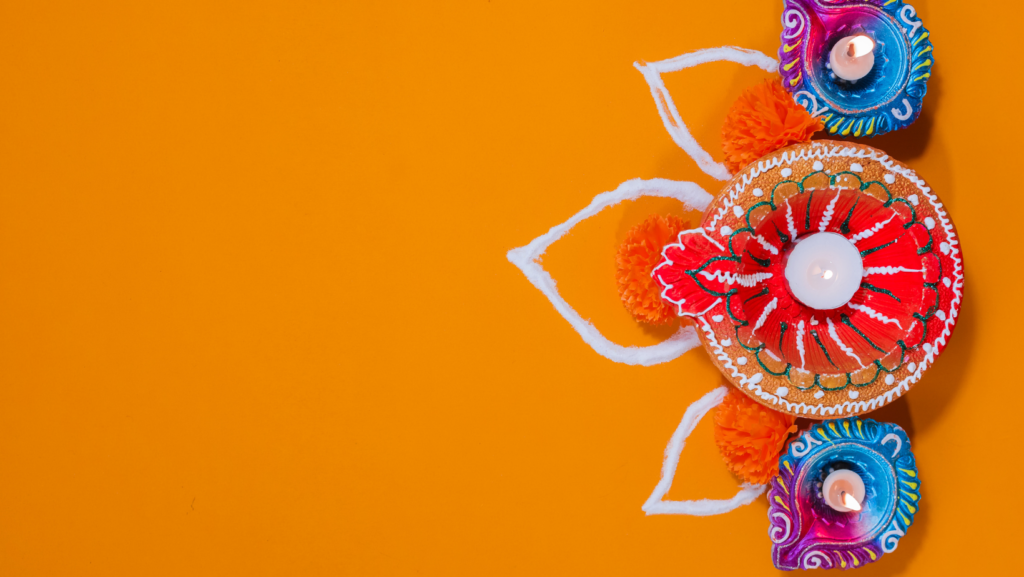[ez-toc]
As the festival of lights, Diwali, approaches, households across the globe gear up to welcome prosperity with vibrant Rangoli designs. Traditionally, these colorful patterns symbolize joy, hope, and the eternal cycle of life. But who says tradition can’t be simple and stunning?
This article dives into the art of creating simple yet mesmerizing Rangoli designs for Diwali. It’s for the benefits of those who believe that elegance lies in simplicity, and are keen to add a personal touch to their celebrations. So, ready to give your creativity wings while keeping it simple? Let’s explore the world of easy-to-make, eye-catching Rangoli designs together.
Simple:6lyywhysk4w= Rangoli Design For Diwali
 Adding depth to the color palette of Diwali celebrations, Rangoli designs hold significant cultural and spiritual value. As intricate as they’re symbolic, these differences bettwen patterns provide a mesmerizing glimpse into centuries-old traditions.
Adding depth to the color palette of Diwali celebrations, Rangoli designs hold significant cultural and spiritual value. As intricate as they’re symbolic, these differences bettwen patterns provide a mesmerizing glimpse into centuries-old traditions.
Associated with Indian festivities, especially Diwali, Rangoli designs symbolize hospitality, according to authoritative sources. Households meticulously craft these creative patterns at their doorsteps to welcome guests and divine entities during festivities. Displaying a rich cultural heritage, the designs vary across India, each region having its unique style and motifs. For instance, you’ll find geometrical patterns in Gujarat, floral inspirations in Bengal, and Alpana designs in Maharashtra, all under the inclusive canopy of Rangoli art.
Spiritual Significance

More than an art, Rangoli designs serve a profound spiritual purpose. They’re believed to harness powerful cosmic energies that invite prosperity and ward off evil forces. The use of specific elements like flowers, grains, colors, signifies respect and gratitude towards nature, contributing to the overall wellness of the household. Furthermore, by involving every member in their creation, embellishing Rangolis instill a sense of togetherness during the festival. Indeed, the spiritual depth and connectivity offered by these age-old designs reveal their timeless relevance in Diwali celebrations.
Exploring Simple Rangoli Designs for Diwali
Transitioning from the importance of rangoli in Diwali, let’s delve into simpler ways of creating these beautiful representations. Individuals can explore the art form and express creativity without being overwhelmed by complexity. Here’s a guide on the materials required and how to create easy yet enticing Rangoli designs for upcoming Diwali festivities.
Materials Needed for Rangoli
For novice rangoli creators, starting with simpler designs lessens the initial stress and makes their journey enjoyable. Before starting with the designs, individuals must gather the necessary materials, ensuring they’ve got everything at their disposal:
-
Rangoli Color: It’s the principal component, coming in various vibrant hues like red, yellow, blue, green, white, etc.
-
Chalk or White Pencil: Useful in sketching the design outline before filling it with colors.
-
Dotted Grid Paper: Beneficial for beginners as it assists in maintaining symmetry and patterns.
-
Tea Cups or Small Bowls: Acts as containers to store the colors.
-
Spoons / Fingers: Contributes to the application and spreading of colors over the design outline.
-
Candles / Diyas: Enhances the appeal by enlightening the designs during the Diwali night.
Remember, rangoli creation isn’t about having fancy or expensive materials, rather it’s an art that thrives on creativity, where simplicity often leads to stunning outcomes.
Step-by-Step Guide to Creating Simple Designs
Below is a comprehensible guide to creating simple but attractive rangoli designs.

-
Choose a Design: Opt for designs like flowers, leaves, geometric shapes, or traditional symbols that are charming but not overly intricate.
-
Prepare the Surface: Clean the selected area. Use a chalk or a white pencil to sketch the design’s outline.
-
Create Dots on Grid Paper: Beginners can create dots on the grid paper to maintain symmetry, which can transpose onto the surface.
-
Fill in the Colors: Start filling in with colors. It’s recommended to begin from the center and move outward.
-
Add Details: Post coloring, add details using a darker color to make the design pop. To provide depth, feel free to overlap colors.
-
Embellish with Diyas: Surround or place Diyas strategically around the rangoli for a festive touch.


More Stories
The Must-Have Accessories: Connected Accessories That Make Cryptocurrency Management Easier
All The Special Things Kahnawake License Offers For Business
Captivating Beauty of Beautiful:wymxcxq3ndy= Sunset: Art, Science, and Photography Tips